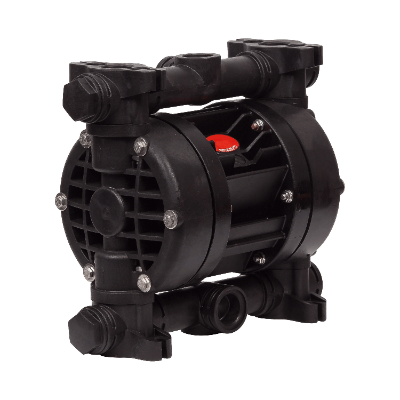What Is a Dry Vacuum Pump?

Dry vacuum pumps are a generic term for a variety of dry vacuum pumps that create a vacuum without the use of oil or other liquids.
Dry vacuum pumps are used in contrast to wet pumps, which use oil or other fluids to create a vacuum. There are several types of dry pumps with different mechanisms, including roots pumps, scroll pumps, claw pumps, and diaphragm pumps.
Unlike rotary pumps, these pumps do not emit oil mist, making them suitable for use in clean environments.
Uses of Dry Vacuum Pumps
The main applications for dry vacuum pumps include semiconductor manufacturing lines, food processing lines, and various scientific analysis equipment such as electron microscopes. In these applications, contamination of the operating environment must be avoided. Dry vacuum pumps are suitable for applications that require a clean environment because their greatest feature is that there is no oil mist or other contaminants in the exhaust.
However, dry vacuum pumps achieve a vacuum of about 1 Pa, which is not very high. When a high vacuum is required, they are used in combination with turbomolecular pumps or ion pumps. The pumping speed differs depending on the type, so it is necessary to select the appropriate type according to the method of use.
Principle of Dry Vacuum Pumps
Dry vacuum pumps are available in a variety of methods, but many of them are classified as gas-conveying pumps. All gas-conveying pumps have an intake port for taking in gas and an exhaust port for discharging gas, and the gas inside the pump is discharged by taking in gas through the intake port and discharging it through the exhaust port.
This mechanism reduces the amount of gas in the space and creates a vacuum by transporting various gases. In contrast to dry vacuum pumps, wet vacuum pumps use a hydraulic fluid or hydraulic oil to completely seal the inside of the dry vacuum pump when transporting gases.
In addition to sealing, hydraulic fluid reduces wear and friction between parts, absorbs heat of compression, and prevents rusting of pump parts.
Types of Dry Vacuum Pumps
Dry vacuum pumps are available in a variety of constructions for transporting gases. The main type of dry vacuum pumps is the positive displacement transfer type, of which the rotary type is the most common.
1. Vane Pump
A vane pump is a pump in which a cylinder with multiple internal vanes inside a circular space rotates in a motion that draws air inside the space with the vanes. The centrifugal force generated in the vanes causes the tips of the vanes to contact the walls of the circular space, forming a sealed space.
2. Claw Pump
A claw pump consists of two claw-shaped rotors, called claws, arranged side by side. Gas is discharged with the claws while rotating in opposite directions. The gas is compressed and discharged outside the pump.
3. Multistage Roots Pump
The multistage roots pump is another pump in which a pair of oppositely rotating rotors discharges suctioned gas to the outside of the pump. The rotor has blades with a cocoon-shaped cross section.
4. Scroll Pump
A scroll pump transfers gas while a swirling scroll rotates within a fixed scroll with the same volute-shaped wall.
5. Screw Pump
A screw pump consists of one to three screws and a casing that houses the screws. As the screws rotate, the gas is pushed through the casing and discharged.
Other than the above-mentioned rotary type, positive displacement dry vacuum pumps also include reciprocating type pumps. The reciprocating parts include diaphragm, piston, and bellows.
Characteristics of Dry Vacuum Pumps
Dry vacuum pumps have no hydraulic oil in the path through which the gas passes. There is no risk of oil mist mixing with the exhaust gas or oil evaporating and diffusing into the vacuum vessel. The ability to obtain a clean exhaust gas and vacuum space is a major feature of dry vacuum pumps.
Another major advantage is that they do not require maintenance such as periodic oil replenishment or replacement. Other features of dry vacuum pumps include compactness, light weight, low vibration, and low noise.